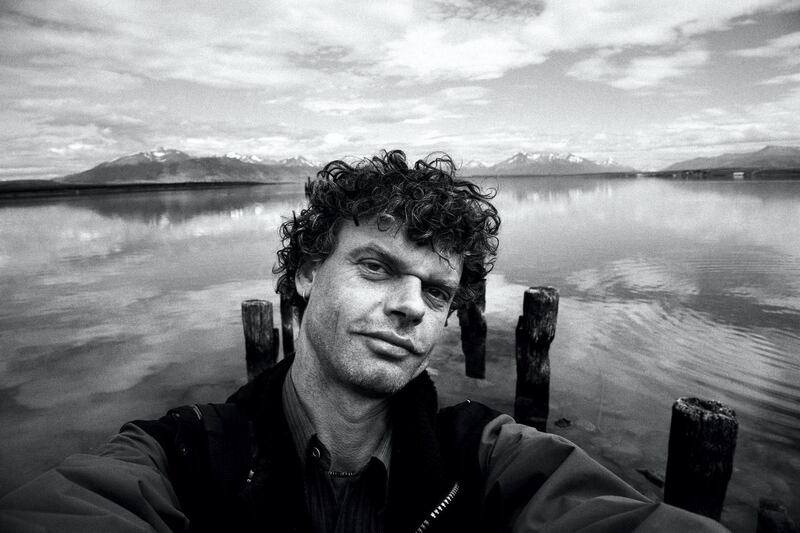During the planning stages for a photo exhibition at Masdar City, at first the shooter thought a fitting title for the exhibit may be Where Will They Go?
Quickly, though, he nixed that idea.
“I realised there is no ‘they’ when it comes to this crisis we’re living, this crisis that so many are unaware of and so many deny,” says Kadir van Lohuizen, the Dutch photojournalist whose work is currently on show at Masdar City’s Eco Villa in the capital.
“It’s not only ‘they’ being affected, it’s all of us, it’s ‘we’. All cultural areas in the world are under threat.”
In a collaboration with The New York Times, Van Lohuizen spent more than two years travelling the world researching the global consequences of rising sea levels caused by climate change. The result is a collection of 27 large, hauntingly vivid images portraying people who still live in affected areas, but also those who have already moved to safer ground. The exhibition highlights the immense complexities associated with the forced displacement of people and the human rights implications involved in such displacements.
“I focused on areas where there’s an urgency, where the rising sea level is already happening and affecting places where people live directly, where sea water intrudes at high tides, making once-fertile land no longer viable for crops and water undrinkable.”
He concentrated on nine regions: Greenland with its melting glaciers, Kiribati, Fiji, the Carteret Atoll in Papua New Guinea, Bangladesh, the Guna Yala archipelago in Panama, the United Kingdom, Miami in the United States, and the Boston area.
The Dutch embassy wanted to bring the world’s attention to this environmental crisis, so they decided to exhibit Van Lohuizen’s haunting images in Abu Dhabi.
“Kadir’s work emphasises global concerns that can no longer be ignored,” says Frank Mollen, ambassador of the Kingdom of the Netherlands in Abu Dhabi. “Our country has for centuries been well aware of the challenges posed by rising water level.
“I hope this exhibition will contribute to a better general understanding of the issues involved, and how to combat them. Dutch expertise will play a role in the mitigation of these global challenges, but a concerted effort from us all will be needed to achieve lasting results.”
Conveying the urgency of the problem visually using a medium like photography was no easy feat, explains van Lohuizen, because he is trying to tell the tale of something that will happen. For example, in certain areas, he had to shoot at high tide. In other areas, it wasn’t just about catching images of flooding, or of sea water and mud oozing into a coastal home.
“In low lying areas like Bangladesh, people are losing their lands to grow crops, land becomes slime, there is sea water in the drinking water reservoirs, people can’t grow crops, can’t drink water. They can’t live there anymore.”
And although the expectation is that Third World countries are most at risk, van Lohuizen points out that the Miami bay area is one of the most expensive zip codes in the United States.
"Miami was included in the project because it's one of the most endangered cities in the world, which people don't realise... Miami is built on limestone and the characteristics of limestone is that it's porous, water will go under it. There is no clear solution for Miami."
At the end of the day all low-lying coastal areas will be affected.
The heart of exhibition, he says, is a multimedia installation running across three giant flat screens, showing videos he had shot in the nine regions he photographed.
"As a journalist, whether you're writing or photographing, you have a responsibility in the stories you tell," he says. "Not only do you need to be original, but the stories have to be relevant. There are nations disappearing, and this hasn't been addressed by the international community. People need help, people should have been evacuated from some of these areas a long time ago. In other areas, there are predictions that people have to be evacuated by 2050 or 2060. Something has to be done."
Maria van der Hoeven, former Minister of Economic Affairs of the Kingdom of the Netherlands and former Executive Director of the International Energy Agency (IEA) and senior fellow at the Clingendael International Energy Program (CIEP) impresses how important the exhibition is.
"The photos by Kadir van Lohuizen are very confronting... this exhibit in Masdar is an excellent example how more people can be made more aware of the effects of climate change.
Where Will We Go? by Kadir van Lohuizen runs until February 16 at Masdar City’s Eco Villa. It’s open from 1pm to 9pm daily. Entry is free










